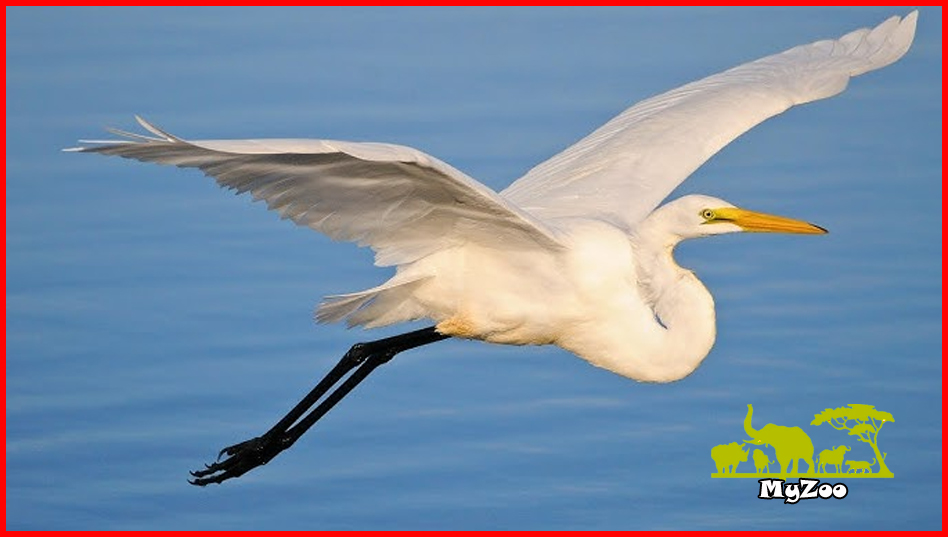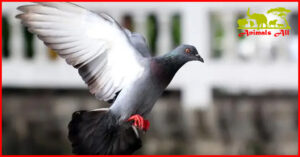
White Crane bird is known for its graceful flying abilities.
The white crane (scientific name: Grus leucogeranus ) is a bird of the family Gruidae in the order Gruiformes. The white crane has red bare skin on its face, pink legs, and black primary flight feathers that are only visible when the wings are spread. The young bird’s body feathers are golden brown; the iris is yellow, the beak is orange-yellow, and the feet are pink. The male and female cranes have the same feather color, but the female cranes are slightly smaller. The white crane is also called the “black-sleeved crane” because its feathers are all white except for the front end of its wings which are black.
White crane is distributed in Northeast China, the lower reaches of the Yangtze River, Hebei, and Xinjiang, and is also distributed in India and Russia. The white crane mainly inhabits open plains, swamps, and large lake shores and shallow swamps, and has a strong attachment to shallow wetlands. The white crane often moves alone, in pairs, or in family groups. During the migration season and winter, they often gather in large groups of dozens or even hundreds of individuals, nesting in swamps in the tundra of the wilderness and foraging in shallow waters near waters rich in plants.
Feed
The white crane is omnivorous, feeding on the stems and tubers of plants such as Vallisneria, Potamogeton, and Carex, as well as leaves and young shoots of aquatic plants and a small amount of animal food such as clams, snails, and mollusks. The white crane breeds from May to June, and each nest lays two oval eggs. The average lifespan of a white crane is over 70 years old.
Throughout history, the white crane has been favored by Chinese literati and Confucian and Taoist celebrities for its naturally elegant feathers, handsome shape, and quiet, loyal, and long-lived nature. It has been endow with cultural connotations of beauty in both form and spirit and a diverse aesthetic value standard. The white crane is now endanger due to habitat destruction and change, competition from introduced species, low survival rates of its own species, and international environmental pollution. Human environmental destruction and hunting are the main causes. The Siberian Crane is classified as Critically Endangered (CR) on the IUCN Red List of Threatened Species.
Morphological characteristics

The white crane is a bird of the genus Grus in the family Gruidae in the order Gruiformes. The white crane has a bare, bright red head and face, white body feathers, black primaries , white secondary and tertiary feathers, and tertiary feathers that extend into a sickle shape and cover the black primaries. The tertiary feathers are so white when standing that they are only visible when the wings spread. The head of a juvenile is feathered, with golden brown feathers; the iris is yellow, the beak is orange-yellow. The feet are pink; the lower back, waist, and upper tail coverts are bright reddish brown with white feather edges; the central tail feathers are slate gray, with reddish brown tips and white bases; the primaries are black.
The iris is brownish yellow, and the beak and feet are dark red. The feet turn red at the second age, and the beak also turns red at the third age. Male and female cranes have the same plumage, but the female crane is slightly smaller. The white crane is also call the “black-sleeved crane” because its feathers are all white except for the front of its wings, which are black. Size measurements: Weight ♂ 5100-7400 g, ♀ 4900-6000 g; body length 1300-1400 mm; bill ♂ 177-199 mm, ♀ 162-186 mm; wings ♂ 563-634 mm, ♀ 538-632 mm; tail 204 mm; tarsus ♂ 241-258 mm, ♀ 254-262 mm.
Habitat
Migration
The Siberian Crane mainly inhabits open plains, swamps, large lake shores, and shallow swamps. It has a strong attachment to shallow wetlands. The Siberian Crane is the most specialized crane species in terms of habitat requirements. The eastern population breeds in Yakutia, Russia . It does not nest in the Arctic tundra, nor in coastal estuary lowlands, river floodplains, or highlands. Instead, it prefers lowland tundra, large areas of fresh water, and open views. Its main nesting area in summer is about 82,000 square kilometers, and its regular nesting range does not exceed 30,000 square kilometers.
Living habits
They are mainly winter migratory birds and traveling birds . These birds migrate to southern China for the winter in early to mid-November in the fall and leave China for the winter in late March to early April in the spring. They migrate in groups. From March 20 to April 1, 1985, a total of 652 cranes were record migrating northward in Beidaihe, of which the largest group had 108 cranes. From October 11 to November 10, 1986, a total of 192 cranes were record in Beidaihe, of which the majority, about 99, migrated from October 29 to November 20. In addition to Beidaihe, Momongge in Jilin Province and Panjin in Liaoning Province are also stopovers for white cranes during their migration. At the end of October every year, more than 100 to 200 white cranes can be see stopping in Momongge, Jilin China.
The migration route of the eastern population of white cranes has been prove by banding records. They fly 5,100 kilometers south from Yakutia to Poyang Lake for wintering, passing through the Yana River, Indigirka River and Kolyma River basins in Russia. After entering China, their main stopover places include Zhalong, Lindian, Momong, Shuangtai River estuary, Luan River estuary, the old course of the Yellow River and Shengjin Lake. In Momong, apart from some populations that make short stops to continue their migration, a certain number of white cranes stop here for 30-40 days in spring and autumn.
Timing
The first sighting date in the spring of 1985 and 1986 was March 25, and all of them migrated away around May 10. On April 27, 2000, 528 cranes were seen. The migration date in the autumns of 1983 and 1984 was September 14. The number of young cranes was counted and it was found that the average proportion of three-month-old young cranes in the autumn of 1985 and 1986 was 22.3%, which was 8.8% higher than the proportion of young cranes counted in late December in the wintering areas of the white cranes during the same period. In the spring of 1985 and 1986, among the 126 white cranes, 22 were nine-month-old young cranes, accounting for 17.5% of the total number. Compared with the autumn of the same year, the proportion of young cranes decreased by 4.8%.
Siberian Cranes
The Siberian Cranes that winter in Poyang Lake fly in late October and arrive by early November. They move around in small groups from December to January of the following year, mainly foraging in the shallow waters of the Great Lake Pond and spending the night in clusters in the Bang Lake Pond. From late February to early March, when the temperature reaches above 10°C, they gradually gather in large groups and return north. By the end of March, they have all migrated away, and the wintering period lasts up to 150 days.
They move around mainly in family units, with 20% and 1 young in the majority, and rarely 10% and 1 young or 20% without young. Subadults gather in small groups of 10-12 and move around together. When foraging, the parents feed the young cranes, and the young cranes do not start digging mud for food until mid-February of the following year. The number of Siberian Cranes wintering in Poyang Lake was first found by researchers at the Institute of Zoology, Chinese Academy of Sciences, in the winter of 1980, with 91 cranes in the Great Lake Pond Pond. Since then, statistics have shown that the highest number has reached nearly 4,000. It can be consider that more than 90% of the eastern population of Siberian Cranes winter in Poyang Lake.
The Siberian Crane is a winter migratory bird that breeds in Siberia, Russia from June to August each year. It stops in the Momong Wetlands in Jilin, northeast China for about a month in September and October before heading south to Poyang Lake in Jiangxi to hibernate. It begins migrating back to the north in mid-to-late March of the following year.


2 thoughts on “White Crane bird is known for its graceful flying abilities.”
Comments are closed.